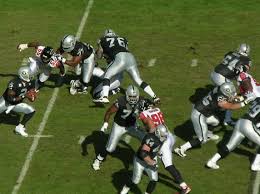The NFL celebrated the 25th year of its relationship with London when Chicago Bears and Oakland Raiders crashed on the Tottenham Hotspur Stadium. Sophisticated coordination controlled the clattering of helmets from the sidelines while linebackers and running backs looked to get the better of each other on the pristine field. NFL’s agreement with Zebra Technologies as their official on-field tracking provider was to expire at the end of the 2017-2018 season. However, the contract was recently extended until 2021. The agreement could make the 2019-20 NFL season the most technologically advanced in the history of the competition.
Zebra is now providing NFL teams with 11-on-11 data from each game that they play on a daily basis. The technology allows the National Football League to evolve into a new age of analytical research and statistical information. The availability of refined statistics will help coaches in evaluating player development and scouting for new players. Before the 2018-19 season, teams only had access to their tracking data after every game.
Broadcasters, fans and match analysis specialists will also have access to unique real-time metrics thanks to new Radio frequency identification (RFID) tags to be placed on each player’s shoulder pad. The technology is, however, not new to factories and warehouses since it is the same one that they use to track inventory, equipment, and people’s movement. The NFL looks to utilize the technology to revolutionize ball and player tracking systems in the game to help capture the best possible performance.
About a third of NFL teams are already using tracking technology to keep track of player fitness information throughout the season. The technology has aided the teams to keep their players in top form and realize health issues forehand. Thanks to the cooperation between the NFL and Wilson Sporting Goods, the same RFID tags have also been built into the NFL game balls. The tags do not affect the weight or the integrity of the ball since they only weigh around 4 grams, which accounts for approximately 1% of the ball’s weight.
The frequencies from both the players and the balls are picked up by receivers stationed around the stadium’s perimeter. The information is critical in getting insights into new levels of efficiency among NFL clubs by revolutionizing the way coaches scouts and trainers assess game-play tendencies and player performance. The flow of information among players will also see new tactics introduced to the game in the future.












